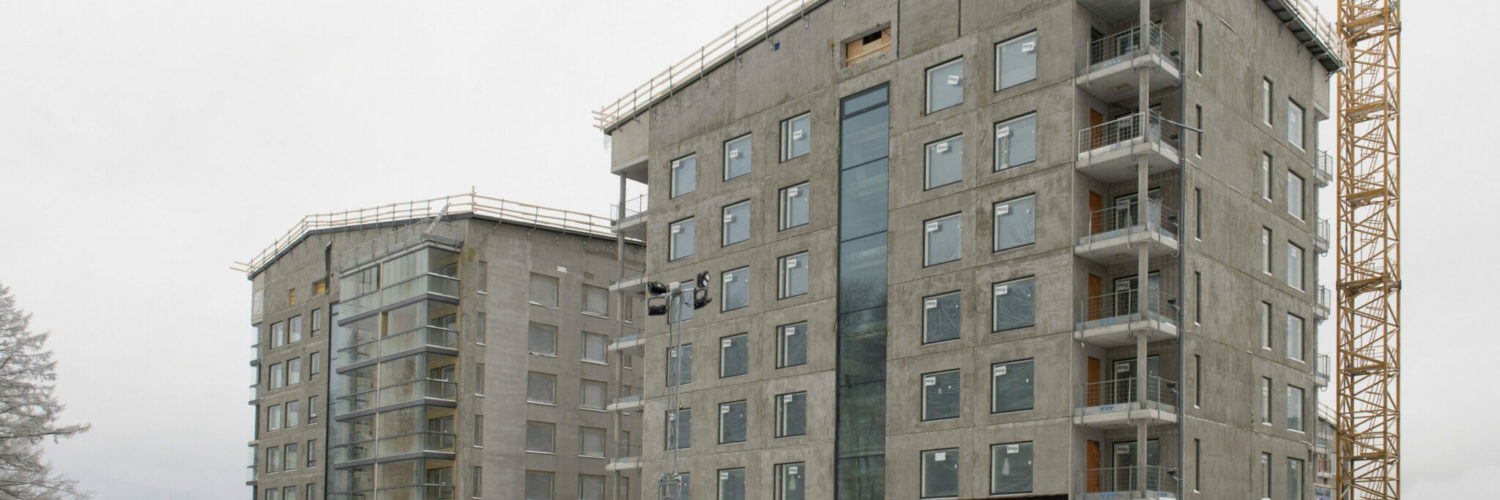Our long-time customer KONE asked us to participate in the KEKO ecosystem project as a specialist in technology. One of the aims of the KEKO project is to improve digital information management at construction sites and find new applications to increase work efficiency.
This time, the focus was on a challenge as old as the human race itself: construction. The initial hurdle of the process is a logistical puzzle in which materials, tools, people and conditions should come together in the right place at the right time – and preferably as quickly as possible.
Construction utilises a great deal of information technology. Especially the early stages of the construction process, involving design and materials management, has already been largely digitalised. That said, the situation changes as we transition into the actual construction phase. Everything is done mostly manually, as materials and tools are moved within the worksite, elements are fitted to walls and any possible problems are tackled as efficiently as possible. No digital information is accumulated on this phase, even though data is extremely important for improving efficiency.
Solving an age-old problem
The number of operators, interfaces and interests involved in construction is high enough that no company can hope to digitalise the entire process alone. This is why the Finnish KEKO ecosystem brings together various parties with the goal of building a shared digital platform. The platform digitalises and provides information in the construction phase and serves as a basis for the building’s in-service data transfer and applications.
KEKO is based on the idea that we can put together an effective solution in Finland and share it for successful application abroad. As a small country, Finland has some unbeatable advantages in a highly complex development project of this kind: The cooperation between our companies is smooth, the development’s cycle times are short, there is very little bureaucracy, technological expertise is high, and people are generally very accepting of new ideas. This is a good context for testing things quickly and scaling up the most successful ideas for use abroad.
UnSeen was tasked with supporting the design and implementation of the KEKO project’s technical solutions, and with measuring their functionality.
UnSeen technology
The problems faced by builders and people working at construction sites are often very practically oriented. Sometimes the issue is a missing material, lost tool or opinion needed from a supervisor.
We do not want to shoulder builders with technology that ends up increasing the work load. Instead, our aim was to find solutions that work unseen in the background, help expedite work tasks and have an actual demand on the market. For this purpose, we had fruitful discussions with YIT experts on ideas that could be beneficial. The discussions revealed a need for an internal data transfer network for worksites, automatic positioning and condition monitoring.
One of the concrete steps was to set up a data transfer mesh network for the worksite based on technology provided by the Tampere-based Wirepas, examine its capability and positioning efficiency, and compared it with a modern RFID-based solution.
In terms of sensor installation and positioning, we ended up using the UnSeen Labs solution, which we have found to suit projects of this type. In the project we used partly commercial off-the-shelf products and when sufficient solutions were not available, we built them by ourselves. For this project, we designed mesh-connected thermal camera and a sensors to measure construction dust.
As a whole, the project was highly rewarding but very complex. Fortunately, this is what we do best. We were able to get everything running as intended and the lessons learned during the implementation are reflected by the effective end result. The Wirepas network met our expectations very well. We were able to get the signal to cover the entire building, and the positioning worked as promised.
Revealing the pulse of the worksite
The network we built over the course of the project is almost like stethoscope for the entire worksite. It can collect situational data in digital format automatically. This data also enables a variety of applications, such as a worksite navigation solution that guides people to the necessary tool or material stack.
New sensors or applications can be easily added to the network. This increases the volume of shared data and improves the innovation opportunities even further. Along the way, we also collected valuable information indicating which solutions are especially important for the builders. One of these potential ideas and a key interest was to establish automatic monitoring for construction dust.
Aiming for business benefits
Despite my initial thoughts revolving if we could bring anything new to this age-old process, we found things to develop immediately. In a technology project such as this, it is essential to keep the most important goal in mind at all times: focus on finding and demonstrating the business benefits behind the great ideas. This is worth the effort and yields competitive advantages. Our agile UnSeen Labs operating model was originally put together for exactly this kind of trailblazing activity.
Got an idea? Let us help!
